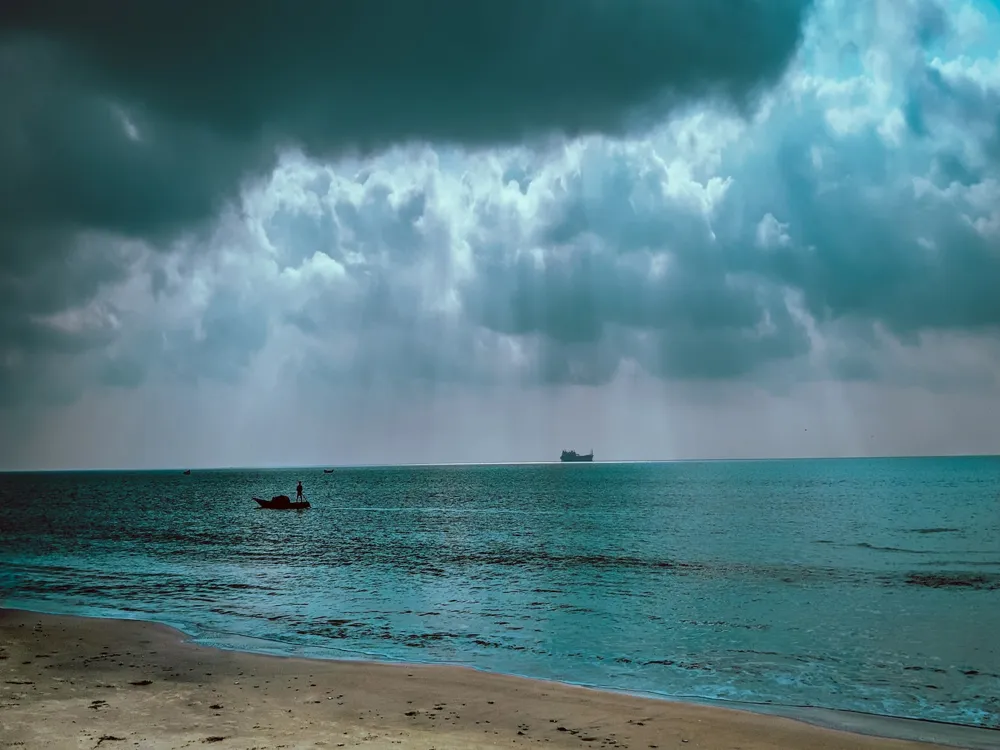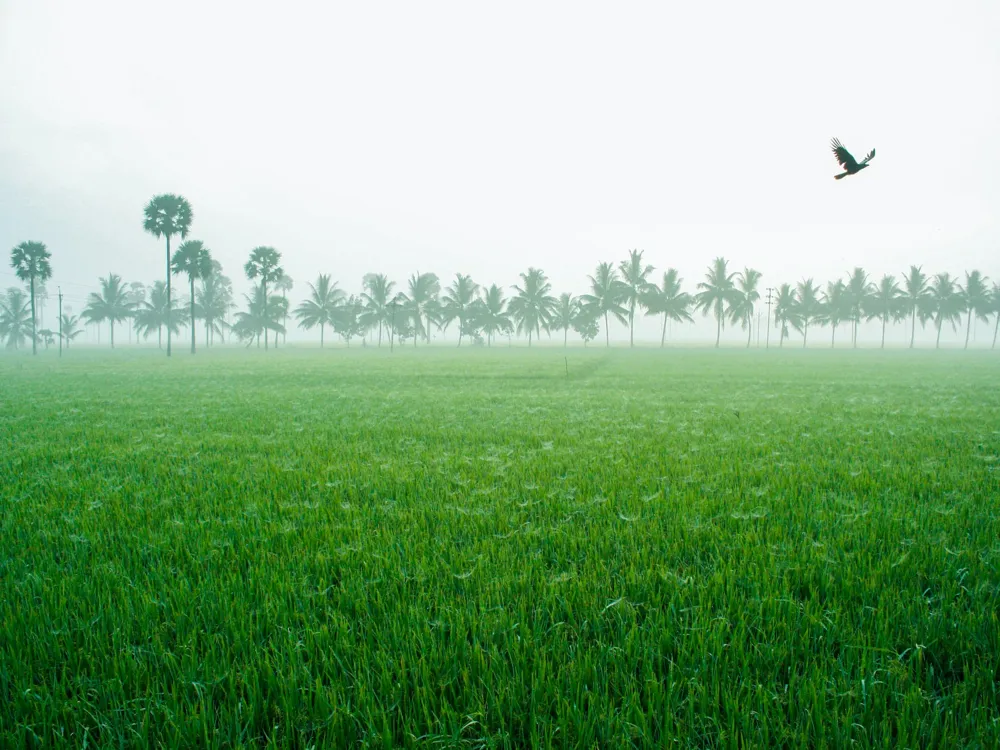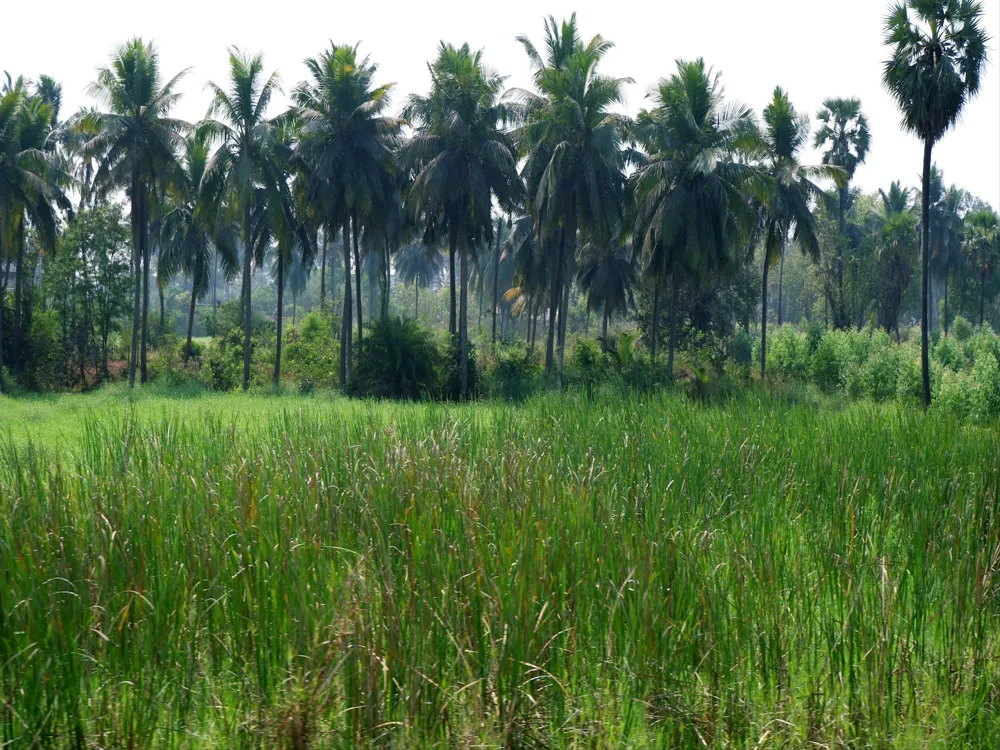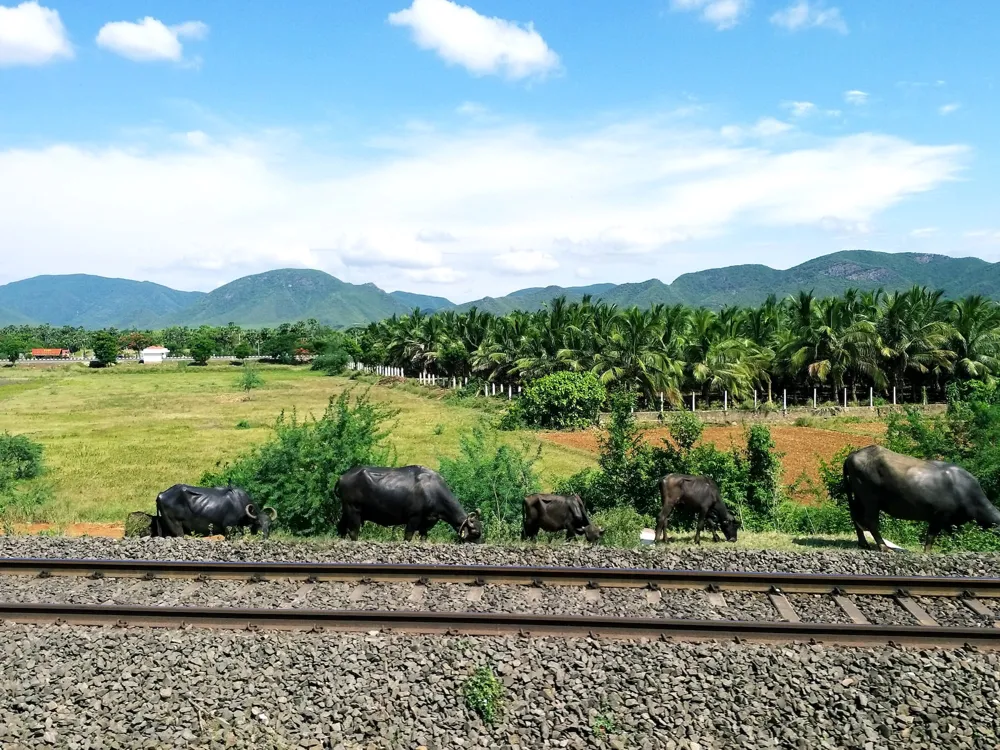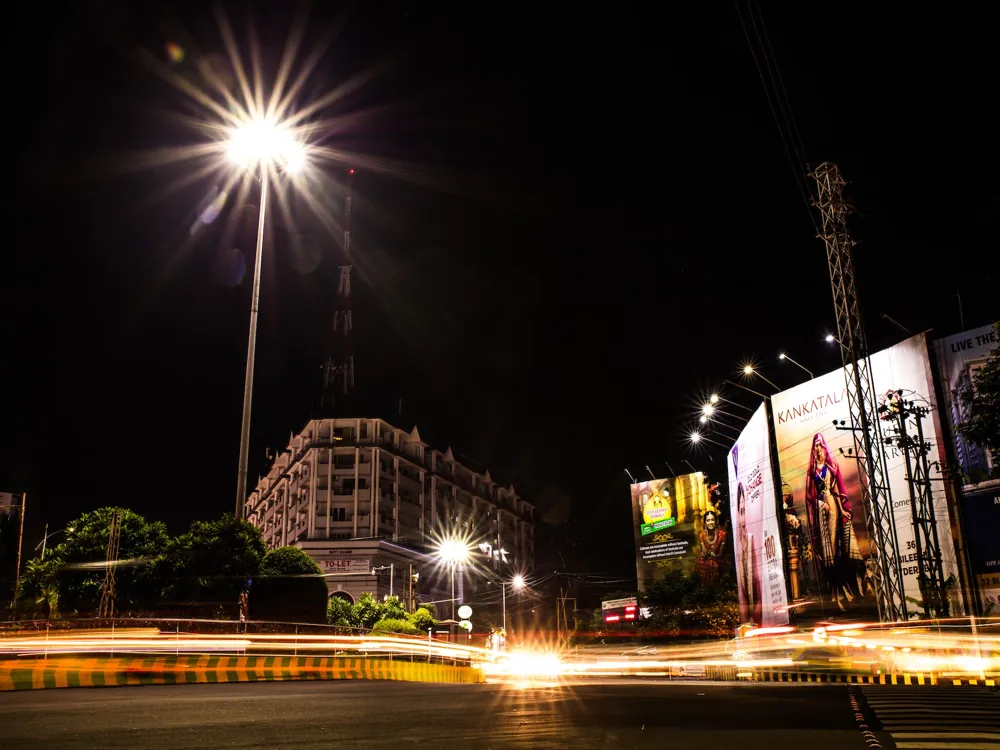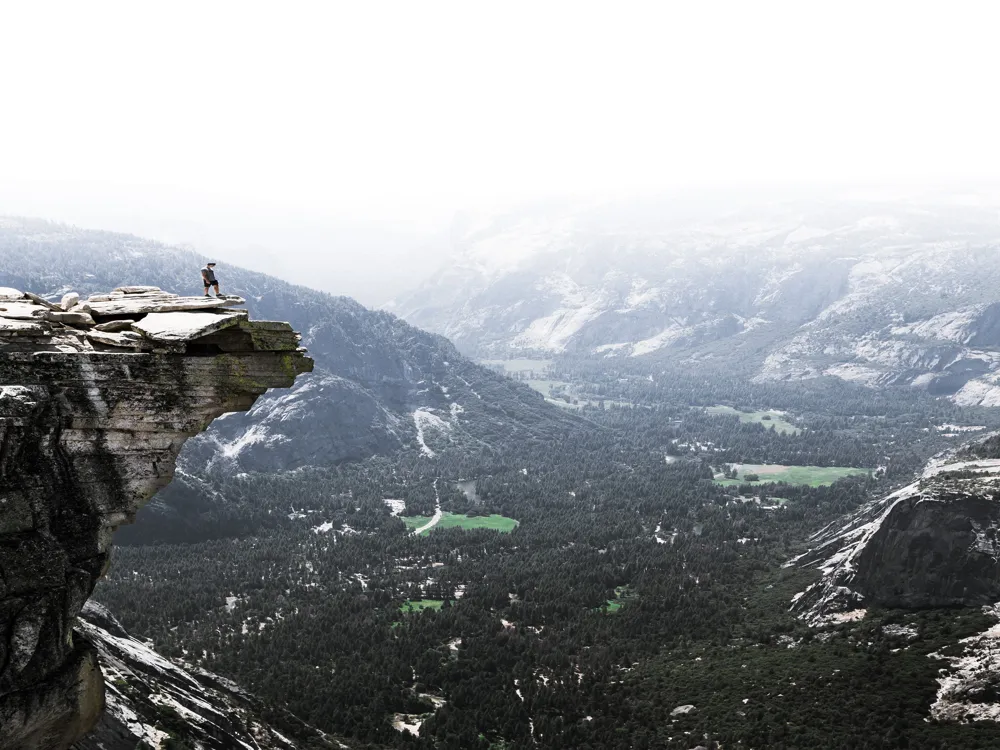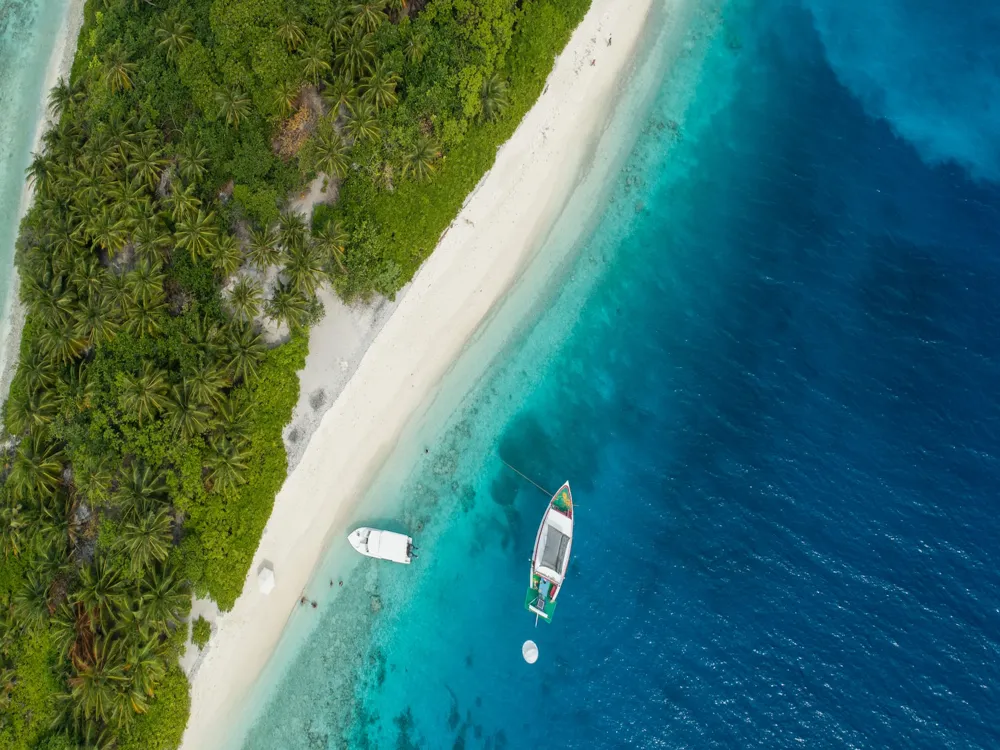The Coringa Wildlife Sanctuary, a magnificent natural reserve located near Kakinada in Andhra Pradesh, India, spans an impressive area and is a vital part of the region's ecological system. Established in 1978, this sanctuary is part of the Godavari estuary and is renowned for its lush mangrove vegetation. It's a haven for biodiversity, housing a vast array of species, including a significant number of reptiles, birds, and fishes. A unique aspect of this sanctuary is its role in supporting the delicate balance of the marine ecosystem while providing a secure habitat for numerous species. As one ventures through the sanctuary, they are greeted by the sights and sounds of various bird species, making it an ideal spot for bird watchers. The most commonly sighted birds include herons, storks, and flamingos. The sanctuary is also home to the endangered white-backed vulture and long-billed vulture. In the tranquil waters, one can spot the elusive Otter and the Estuarine Crocodile, basking on the mudflats. The mangroves of Coringa are not just ecological treasures but also act as natural barriers against cyclones and tsunamis, protecting the inland. The root system of these mangroves plays a crucial role in preventing soil erosion and maintaining water quality. The sanctuary's rich biodiversity and its crucial role in ecological balance make it a site of significant environmental importance. The architecture of Coringa Wildlife Sanctuary is not about man-made structures but the intricate and awe-inspiring design of nature. The sanctuary's landscape is a mesmerizing interplay of water and land, created by the backwaters of the Godavari River. The mangrove forests, with their dense root systems, form a natural architectural marvel, showcasing a unique adaptation to the saline coastal environment. Within this natural architecture, there are several watchtowers strategically placed for wildlife observation. These simple yet effective structures allow visitors to have an elevated view of the sanctuary, providing a panoramic sight of the estuary and its inhabitants. The wooden walkways meandering through the mangroves offer a close-up view of the flora and fauna, making the experience immersive and educational. The sanctuary's design is a testament to the symbiotic relationship between land and water. The tidal creeks and mudflats form a complex network that supports the rich biodiversity. This natural architecture, shaped over centuries, provides a critical habitat for many species and plays a significant role in the ecosystem's health and sustainability. The ideal time to visit the sanctuary is between October and May, as the weather is pleasant, and migratory birds are present. Opting for a guided tour can enhance your experience, as knowledgeable guides provide insightful information about the sanctuary's wildlife. Carry binoculars for bird watching, wear comfortable shoes for walking, and don't forget to bring mosquito repellent. Maintain a safe distance from animals and refrain from feeding them to avoid disturbing their natural behavior. Adhere to eco-friendly practices by not littering and using eco-friendly materials during your visit. Coringa Wildlife Sanctuary is easily accessible from Kakinada, which is well-connected by road, rail, and air. The nearest airport is in Rajahmundry, about 70 km away. From there, you can hire a taxi or take a bus to reach the sanctuary. Kakinada town railway station is the nearest railhead, and regular bus services from Kakinada city to the sanctuary are available. For those driving, the sanctuary is about 20 km from Kakinada city and is well-signposted. Read More: Overview of Coringa Wildlife Sanctuary in Kakinada, Andhra Pradesh
Architecture of Coringa Wildlife Sanctuary
Tips When Visiting Coringa Wildlife Sanctuary
Best Time to Visit
Guided Tours
Essential Gear
Respect Wildlife
Eco-friendly Practices
How To Reach Coringa Wildlife Sanctuary
Coringa Wildlife Sanctuary
Kakinada
Andhra Pradesh
NaN onwards
View kakinada Packages
Weather :
Label : Must Visit
Tags : Wildlife
Timings : 9:00 AM to 5:00 PM (Closed on Tuesdays)
Time Required : 2-3 hrs
Entry Fee : Adults: INR 10,
Kids: INR 5,
Boating prices vary depending on the number of people.
Planning a Trip? Ask Your Question
Kakinada Travel Packages
View All Packages For Kakinada
Top Hotel Collections for Kakinada

Private Pool

Luxury Hotels

5-Star Hotels

Pet Friendly
Top Hotels Near Kakinada
Other Top Ranking Places In Kakinada
View All Places To Visit In kakinada
View kakinada Packages
Weather :
Label : Must Visit
Tags : Wildlife
Timings : 9:00 AM to 5:00 PM (Closed on Tuesdays)
Time Required : 2-3 hrs
Entry Fee : Adults: INR 10,
Kids: INR 5,
Boating prices vary depending on the number of people.
Planning a Trip? Ask Your Question
Kakinada Travel Packages
View All Packages For Kakinada
Top Hotel Collections for Kakinada

Private Pool

Luxury Hotels

5-Star Hotels

Pet Friendly










